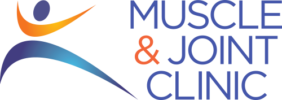Experts estimate that as much as 80% of the population will experience a back problem at some time in their lives.*
Back Pain: Why You Get It
The low back needs to be strong enough to lift the groceries out of the backseat and flexible enough to pick up the clothes off the floor. Yet, the delicate balance between a strong and mobile low back is disrupted by many of our daily activities. The spine is designed to support a moving human being, with spinal curves and discs to provide shock absorption, and muscle groups to provide motion. However, most people spend much of the day sitting or standing in one spot. This pattern puts additional strain on the spine and creates muscle imbalances that can lead to low back pain.
Most people will experience low back pain at some point in their lives.
Back Pain: More Than a Localized Ache
If you think of the low back as just that area where you put your hand when it aches, you are missing a much bigger picture:

- Large muscles from the front and back of the torso and pelvis all attach in the low back. This makes the lower back particularly susceptible to pain and dysfunction when these tissues become tight and weak.
- In addition to localized pain, the low back may be the source for pain that occurs downstream such as in the buttock or leg.
- All of the nerves that supply the pelvis and legs exit the spine in the lumbar (lower back) area. These nerves may become pinched where they exit the spine and in soft tissues along their path to the feet.
Thorough examination of the spine and surrounding tissues is necessary to make a proper diagnosis.
Back Pain: Treatment
At Muscle & Joint Clinic, we perform the most scientifically and clinically current tests to examine your spine and soft tissues. By making an accurate diagnosis and using highly effective treatment methods such as shockwave therapy, Active Release Techniques, and cupping, low back pain can often be resolved. Remobilizing joints, removing scar tissue and correcting muscle imbalance will be the primary focus of treatment. This treatment regime can often resolve even the most stubborn of low back pain problems.
*Source: Epidemiology and Risk Factors for Spine Pain (Neural Clinic, May 2007)

